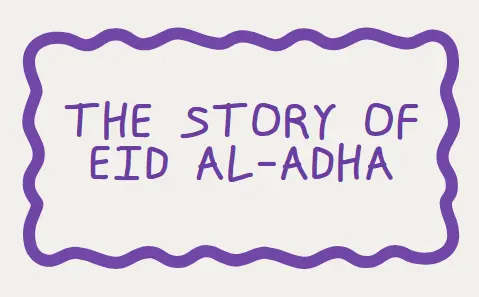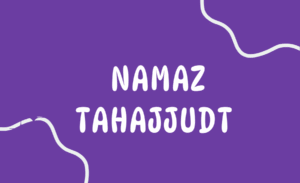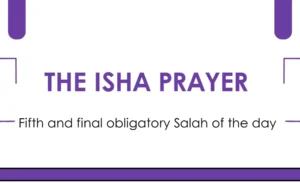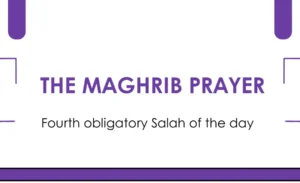Eid al-Adha, also known as the “Festival of Sacrifice,” is one of the most significant and revered Islamic holidays. It marks the culmination of the Hajj pilgrimage and is observed by millions of Muslims around the world. The festival honors the profound act of faith, obedience, and sacrifice exhibited by Prophet Ibrahim (Abraham) and his son Isma’il (Ishmael). But beyond the celebration, Eid al-Adha is a time for reflection, prayer, and gratitude, as well as a reminder of the core principles of sacrifice, submission to Allah, and the importance of community.
In this blog, we’ll delve deeply into the story of Eid al-Adha, explore its historical and religious significance, and explain why it continues to hold such an essential place in the hearts of Muslims.
Eid al Adha Background
Eid al-Adha has its roots in the profound story of Prophet Ibrahim (Abraham) and his son Isma’il (Ishmael). The holiday commemorates the ultimate act of obedience and faith that Ibrahim showed when Allah commanded him to sacrifice his beloved son, Isma’il, as a test of loyalty. Ibrahim, who had long yearned for a son and was blessed with Isma’il in his old age, did not hesitate to fulfill Allah’s command, even though it meant parting with the son he dearly loved. His unwavering faith in Allah’s wisdom is central to the holiday’s meaning. Just as Ibrahim raised the knife to sacrifice Isma’il, Allah intervened and replaced Isma’il with a ram, sparing his life. This miraculous event signifies Allah’s mercy and is the foundation of the Eid al-Adha tradition, which includes the sacrifice of an animal to commemorate Ibrahim’s obedience and Allah’s compassion.
The holiday of Eid al-Adha goes beyond the act of sacrifice; it is a time for Muslims to reflect on the themes of faith, sacrifice, charity, and gratitude. In the Islamic tradition, Muslims who are able to do so perform Qurbani, the ritual sacrifice of an animal such as a sheep, goat, cow, or camel. The meat from the sacrifice is divided into three parts: one-third is given to the poor, one-third is shared with family and friends, and the remaining third is kept by the family performing the sacrifice. This ritual emphasizes charity and caring for those in need. Eid al-Adha also marks the culmination of Hajj, the annual pilgrimage to Mecca, which draws millions of Muslims worldwide to reflect on their faith and seek spiritual renewal. In this way, the holiday serves as a powerful reminder of the values of obedience, generosity, and the unity of the global Muslim community.
The Origin of Eid al-Adha: The Story of Prophet Ibrahim
At the heart of Eid al-Adha lies the incredible story of Prophet Ibrahim and his willingness to sacrifice the most beloved thing to him, his son Isma’il, in obedience to Allah’s command. This story is recounted in the Qur’an in Surah As-Saffat (37:102-107), and it serves as the foundation of the Eid al-Adha celebration.
The Divine Test: Ibrahim’s Obedience to Allah
Prophet Ibrahim (PBUH) is known for his unwavering faith in Allah. He was born into a society that practiced idol worship, but from a young age, Ibrahim rejected the false gods and believed in the One true God “Allah”. His life was filled with trials, but his commitment to Allah was unshakable.
One of the greatest tests of Ibrahim’s faith came when he was commanded by Allah to sacrifice his son Isma’il. According to Islamic tradition, Ibrahim and his wife Sarah were blessed with a son in their old age after years of longing for a child. Allah granted them the son they had prayed for, and his name was Isma’il. As Isma’il grew, Ibrahim received a divine revelation in a dream that Allah had ordered him to sacrifice his beloved son.
This dream, which was a command from Allah, tested Ibrahim’s faith and submission to Allah. Despite the heartbreaking nature of the command, Ibrahim did not hesitate. His devotion to Allah was so profound that he prepared to carry out the command, knowing that this was Allah’s will.
Isma’il’s Willingness to Sacrifice
Upon informing his son Isma’il of the divine command, Ibrahim’s faith and trust were mirrored by Isma’il’s response. Isma’il, although a young boy, recognized the importance of submission to Allah’s will. He accepted the sacrifice willingly, showing his own obedience and trust in Allah’s plan. In Surah As-Saffat (37:102), Isma’il says to his father:
“O my father, do as you are commanded. You will find me, if Allah wills, among the patient.” – Qur’an (37:102)
This moment of unwavering faith and obedience from both father and son serves as a powerful testament to their devotion to Allah. Their readiness to submit to Allah’s will, despite the hardship it entailed, is the essence of the sacrifice that is commemorated on Eid al-Adha.
The Divine Intervention: The Ram as a Substitute
As Ibrahim prepared to sacrifice his son, a miraculous event occurred. Just as Ibrahim raised the knife to sacrifice Isma’il, Allah intervened and called out to him, stopping him from going through with it. Allah said:
“O Ibrahim, you have fulfilled the vision.” – Qur’an (37:105)
At that moment, Allah sent a ram from Paradise as a substitute for Isma’il, allowing Ibrahim to sacrifice the ram instead of his son. This divine intervention was a demonstration of Allah’s mercy and a reward for Ibrahim’s obedience. Allah accepted his sacrifice and blessed him for his unwavering faith.
In remembrance of this act of obedience and sacrifice, Muslims around the world offer an animal sacrifice (usually a sheep, goat, cow, or camel) during Eid al-Adha. The meat from the sacrifice is distributed to family, friends, and those in need, symbolizing the willingness to give up what is dear to us for the sake of Allah.
The Significance of Eid al-Adha: Lessons of Faith, Sacrifice, and Charity
Eid al-Adha is not just a commemoration of Ibrahim’s sacrifice but also a time for Muslims to reflect on several key lessons:
1. Faith and Obedience to Allah
The story of Prophet Ibrahim and his son Isma’il teaches Muslims about complete submission to Allah’s will, no matter how difficult the command may be. It serves as a reminder that faith requires unwavering trust in Allah, even in the face of trials and hardship. Just as Ibrahim and Isma’il trusted in Allah’s wisdom, Muslims are encouraged to have full trust in Allah’s plan for them.
2. Sacrifice for the Sake of Allah
Eid al-Adha teaches the importance of sacrifice, not just in the physical act of slaughtering an animal, but also in the sacrifices we make in our daily lives. Muslims are reminded that they should be willing to sacrifice their desires, time, resources, and comforts in order to fulfill Allah’s commands and serve the greater good of humanity. The ritual sacrifice during Eid al-Adha is a symbolic gesture of this broader concept of sacrifice.
3. Charity and Helping Those in Need
One of the most significant aspects of Eid al-Adha is the act of giving. After the sacrifice, the meat is divided into three parts: one-third is given to the poor and needy, one-third is shared with relatives and friends, and the remaining third is kept for the family. This distribution emphasizes the importance of charity, ensuring that even those who are less fortunate can partake in the blessings of Eid. Eid al-Adha is thus a celebration of not only faith but also generosity and compassion.
4. Unity and Community
Eid al-Adha is also a time of gathering and unity within the Muslim community. Muslims come together to pray, offer their sacrifices, and share the joy of the occasion. The unity of the community, as demonstrated by the collective prayer and sacrifice, reinforces the sense of brotherhood and solidarity among Muslims worldwide.
The Rituals of Eid al-Adha: How It Is Celebrated
Eid al-Adha is marked by several important rituals, each of which carries its own meaning and significance:
1. Performing the Eid al-Adha Prayer
The day of Eid al-Adha begins with a special prayer known as Salat al-Eid. This prayer is typically performed in congregation at mosques or open fields and consists of two units (rak’ahs). The prayer is followed by a sermon (khutbah) in which the imam reminds the community about the significance of the day.
2. The Sacrifice (Qurbani)
The central ritual of Eid al-Adha is the Qurbani, the sacrificial offering of an animal. The act of sacrificing an animal is symbolic of Ibrahim’s willingness to sacrifice his son, and Muslims around the world participate in this act to honor his devotion to Allah. The meat is then distributed to family, friends, and the needy.
3. Sharing Meals and Festivities
After the prayer and sacrifice, Muslims gather with family and friends to share festive meals. The day is filled with joy, feasting, and expressions of gratitude for the blessings of life, family, and faith. It is also a time for Muslims to reconnect with loved ones and strengthen social bonds.
4. Giving to the Poor
As part of the Eid al-Adha celebrations, Muslims give generously to charity. This includes not only the distribution of the meat from the sacrifice but also donations to various charitable organizations that serve those in need. The spirit of giving and helping others is at the heart of the holiday.
The Eternal Legacy of Eid al-Adha
Eid al-Adha is much more than just a holiday, it is a time to renew and strengthen our faith, reflect on the power of sacrifice, and give back to those in need. The story of Prophet Ibrahim and his son Isma’il serves as a timeless reminder of the importance of obedience to Allah and the selfless devotion required to live a life of faith.
As Muslims around the world gather to celebrate Eid al-Adha, they are reminded of the sacrifices made by Ibrahim and Isma’il, and they are encouraged to reflect on their own lives and how they can embody the lessons of faith, sacrifice, and charity. By doing so, they honor not only the legacy of Prophet Ibrahim but also the essence of what it means to be a faithful servant of Allah.
May this Eid al-Adha bring peace, blessings, and prosperity to all. Eid Mubarak! 🌙






